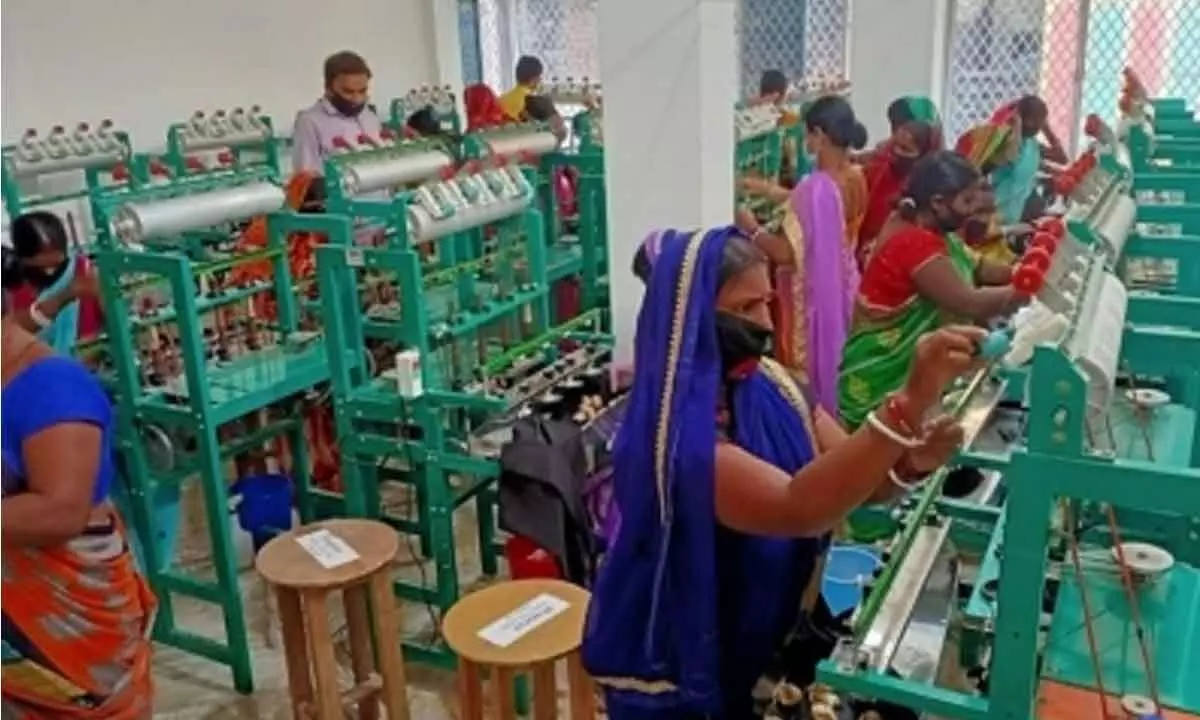How Jharkhand's tussar silk spinning its web globally
Of the 3.5 lakh people in the country engaged in the farming, production and trade of tussar silk, a total of 2.2 lakh are from Jharkhand
image for illustrative purpose

Raksha Bandhan, the festival of tying silk thread will be celebrated on August 11-12, but do you know how it is made and from where it comes?
You will get the suitable answer to these questions in Jharkhand as 76.4 per cent of the country's tussar silk is produced in the state.
Of the 3.5 lakh people in the country engaged in the farming, production and trade of tussar silk, a total of 2.2 lakh are from Jharkhand.
The climate of the state is favourable for the breeding of the silkworm. For breeding purposes, usually 30 degrees Celsius temperature is required and for around 175-180 days in a year, most parts of the state have that temperature only.
Arjun, Asan and Sal trees are considered most suitable for the production of Tasar silkworms and these trees are in abundance in Jharkhand.
In the past two decades, the state's Kuchai silk has made its mark across the world, especially in France, Germany and Japan. Most of the people of the state involved in production of the silk get the maximum technical support from the Central Silk Board.
Last week, while laying the foundation stone for the World Trade Centre, Chief Minister Hamant Soren expressed hope that the sheen of Jharkhand silk will reach far and wide. Sericulture scientist RB Sinha said that after Jharkhand became a separate state, silk production increased from 23 to 25 times. Over 2,000 metric tonnes of silk is produced here.
As per the figures provided by the Central government in Parliament, in 2017-18 Jharkhand produced 2,217 metric tonnes of silk; in 2018-19 it was 2372 metric tonnes and in 2019-20 2399 metric tonnes were produced.
The Covid pandemic impacted silk production in the past two years with the state producing 2,185 metric tonnes in 2021 and 1,046 metric tonnes in 2021-22. The special thing about silk produced in Jharkhand is that it is 100 per cent natural. Any form of chemical is not used in its production.
Most of the silk is produced in Saraikela, Kharsawan, West Singhbhum districts of the state. In the first phase, tussar worms are released on Arjuna and Sal trees and then in the second phase, at a scheduled time, these worms form cocoons and in the third phase, threads are extracted by processing the cocoons.
Tussar cultivation has made more than two lakh people in tribal areas in the state 'aatmanirbhar' (self dependent) to an extent. Since 2017 till now, Jharkhand State Livelihood Promotional society (JSLPS), run under the Department of Rural Development, has connected about 18,000 families in 20 blocks of eight districts with scientific cultivation of silk.
The Central Silk Board, Jharkhand Silk Textile and Handicraft Development Corporation and Jharkhand State Khadi Board are running separate projects for the production of tussar silk. Indravati Tiriya, a resident of Sudurvarti village in Majhgaon, after taking technical training in silk production under project 'Silk' run by JSLPS, is a successful tussar producer.
"I never thought that tussar would prove to be so beneficial for me," Amravati says. "I got training from the government. Last year, our family earned Rs 1,69,000," Amravati added.
Silk messenger Jogen Munda, a resident of Maranghatu of Kuchai, said, "Cultivation of tussar has given a new shine to our life."
A large number of women are involved in tussar production. After working for just two months, thousands of families are earning Rs50,000 to Rs60,000 per year.
Many people, especially Jains avoid using silk fabrics as worms are killed during its making. Because of this reason many areas of Jharkhand are now producing 'ahimsa silk'.
For preparing this silk, instead of killing the worms inside the cocoon, it is allowed to fly in a natural way. After that the thread is prepared from the leftover cocoon. For the past many years, the 'ahimsa silk' is being produced in Dumka, Ranchi, among other places.

